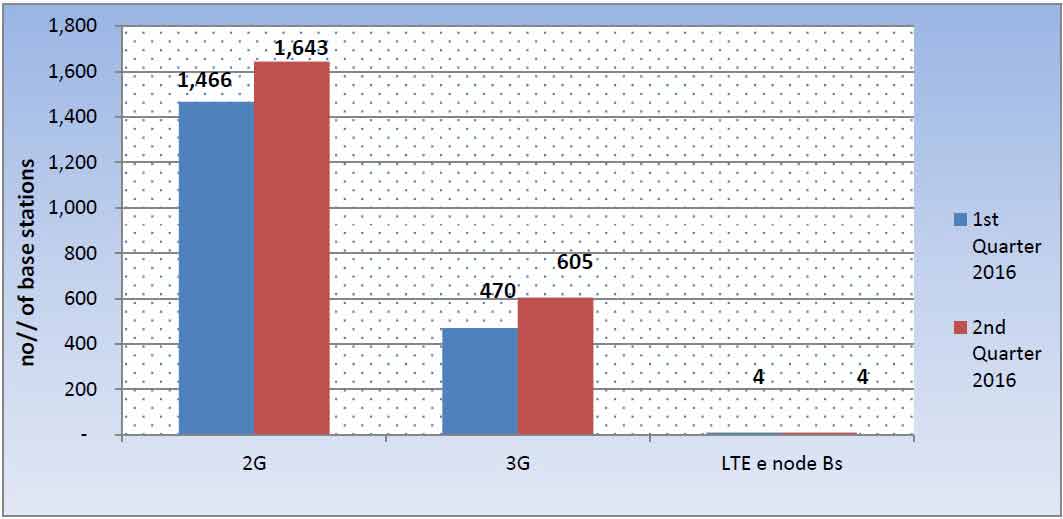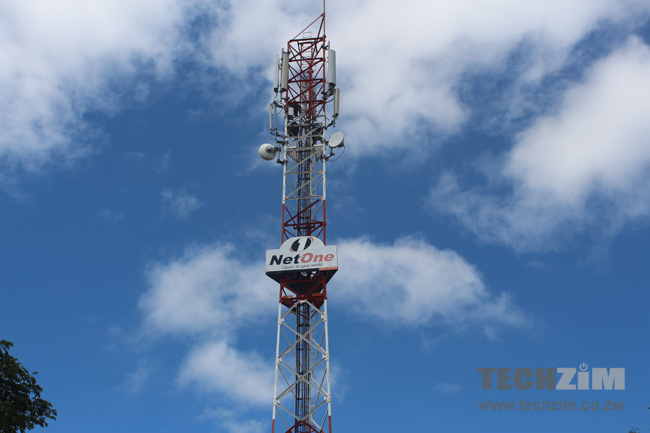According to POTRAZ’s Q2 2016 sectoral report, there are 4,611 2G base stations active in Zimbabwe. Between 1 April – 30 June 2016, 298 2G base stations were commissioned to bring the total number to 4,611 from 4,313 the previous quarter. As it stands there are more 2G base stations in Zimbabwe (4,611 in total) than 3G and LTE base stations combined (2,745 combined total).
mobile base stations in Zimbabwe

source: potraz-q2-sector-performance-report-2016
What was also interesting from the report was that only 35% of the 2G base stations are in rural Zimbabwe. Not to say that 2G is meant for rural areas but with over 10 million people and 68% of our total population living in rural Zimbabwe we expected a slightly higher percentage since the introduction of 3G back in 2009 and LTE in 2013. Generally, the introduction of new technologies allows for a trickle down effect of older technologies to be installed previously disadvantaged areas but this seems to be going at an alarmingly slow rate.
Base Stations in Rural Zimbabwe

source: potraz-q2-sector-performance-report-2016.
Another interesting realization was that if 35% of 2G is in rural areas, 65% of it is still in urban areas. From the data provided, there are more urban 2G base stations (2,968) than all the 3G base stations countrywide (2,232). So does this mean Zimbabwe is still a 2G country? Based on the data provided, yes.
Unfortunately, POTRAZ did not break down active internet subscriptions over 2G, 3G, and LTE and instead bundled them into one (6,586,650 for interest sake). That kind of data would have given more weight to our assumption but for the sake of constructive argument, we believe Zimbabwe to be a 2G country.

12 comments
Zim has always been a 2G country. That ain’t about to change anytime soon.
on a side note, I’m still waiting for that fb speed test Batsi, make it happen!
can’t say the date in case “they” juice up their network, but i think I’ve figured conclusive testing methods for both WhatsApp and facebook now
Great! knew you’d come up with something, so the usual process, 3G first then 4G.
Can’t wait to see the results 😀
The speeds we are being given are really crap. These Service providers are crazy. Norton will be the only place where il will make sure it has 4G on all networks…
U deploy technology according to handsets in the market. 2G handsets (GPRS & EDGE) are the most available in Zimbabwe. 3G handsets are slowly gaining market penetration with major cities leading, the reason why there are more 3G sites in major cities. LTE handsets account for about 3% so I guess its true the rate of development is alarmingly slow.
now it make sense why govt wants infrastructure sharing
Most telecoms were set when the technology was mainly 2G, that was a big investment. 2G is not compatible with 4G, and both 4G and LTE will not quickly give ROI to ISPs, so why replace the technology which is working and giving a bit of cash with something like 4G and LTE which will turn you into data pipes and get you thrushed by OTTs.
This move from 2G can only be enforced by the regulator if there is demand for it and user outcry.
Another angle to force upgrades is to beef up TelOne LTE network and bring real competition. TelOne have not had any 2G, 3G or 4G infrastructure to worry about so they can start on a clean slate. But this ofcourse requires technical not political minds, and the major investor in TelOne is political driven.
i think 2G will stick around with us for at least 5 years. This due too several reasons
1.Coverage
2G has a greater foot print than the other 2 later technologies. And in ZIm we still haven’t achieved 100% coverage on 2G which requires less RF units for coverage.
2. Transmission Bandwidth.
Only one operator has invested in this area, so for the others it means buying TX bandwidth to support their networks(which is expensive compared to revenues). Thus marketing would rather push for massive return on investment for 2G network than prioritise complete migration to 3G/4G
3.Devices on the market
Most of the latest smart devices are beyond the reach of many. And the current economic hardships does not favour credit terms from Operators or dealers. So the ordinary user will stick to the 2.75E and 3G device for now…
http://www.zdnet.com/article/vodafone-australia-shutting-down-2g-network-in-2017/
Even those on 4G it still performs like 2G…So there is no point in upgrading really!
network is always as fast as the slowest point in the network. They might have 4G base stations, but if your connection end up being routed through 2G basestation somehow, you will have 2G speed.
80% of Telco revenues come from Harare (a very concentrated area of Harare mainly close to CBD). There is no business case for deploying expensive Infrastructure in the rural areas using the very scarce funds available. USF…?